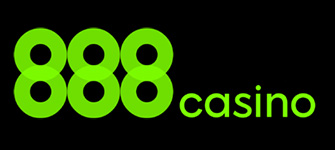Playing Best Odds in Craps
Craps is arguably among the most well-loved casino games and has already developed into a staple for the bulk of the casinos. If played correctly, craps ranks among the casino games with the lowest house advantage in the gambling world, which undoubtedly renders it an appealing option for gambling enthusiasts.
Yet, many casino enthusiasts shy away from playing craps because of the increased complexity of the game that can be ascribed to the diverse betting opportunities it reveals and the fast pace at which it is played. In spite of the fact that craps relies entirely on chance, getting familiar with the different bet types, their payouts, the house edge, and the odds will be instrumental in enjoying a rewarding gaming experience.
No matter if you are a newcomer at the craps table or you are just a little bit rusty, you should certainly know that playing the best odds in craps will greatly enhance the time you will spend rolling the dice.
- ✓ Dice Combinations Explained
- ✓ Probability and Odds
- ✓ Understanding the House Edge
- ✓ Payouts of Craps Wagers
- ✓ How to Assess Craps Bets
Dice Combinations Explained
If you aspire to become a successful craps player, you should know that this does not go without learning the ins and outs of probability and the role it has in the game. To be more specific, gambling enthusiasts will only be able to comprehend the role odds play once they learn the fundamentals of probability.
Some casino enthusiasts might already be aware that probability is simply the mathematical explanation of the likelihood of an event to occur. In order to figure out what the probability of an event to come about is, you will be required to divide the total number of ways in which that particular event can happen by the total number of possible events. Although it might sound exceptionally confusing at that point, players should rest assured that making these calculations is exceptionally straightforward.
Before we delve into probability in craps, we should pay more attention to the dice combinations players can see. As players might already know, craps uses a pair of six-sided dice, which means that a total of 36 combinations can appear once the dice are tossed. Once the pair of dice is shot, players will be presented with one out of the 11 possible totals that cannot be greater than 12 and less than 2.
Here is a rundown of the dice values and the ways in which each value can be tossed out.
| Dice Value | Combinations for Rolling This Value | Number of Ways to Roll This Value |
|---|---|---|
| 2 | [1-1] | 1 |
| 3 | [1-2] [2-1] | 2 |
| 4 | [2-2] [3-1] [1-3] | 3 |
| 5 | [3-2] [2-3] [1-4] [4-1] | 4 |
| 6 | [3-3] [4-2] [2-4] [5-1] [1-5] | 5 |
| 7 | [3-4] [4-3] [5-2] [2-5] [1-6] [6-1] | 6 |
| 8 | [4-4] [6-2] [2-6] [3-5] [5-3] | 5 |
| 9 | [5-4] [4-5] [3-6] [6-3] | 4 |
| 10 | [5-5] [6-4] [4-6] | 3 |
| 11 | [6-5] [5-6] | 2 |
| 12 | [6-6] | 1 |
Learning this basic information about the dice combinations is of crucial importance due to the fact that major aspects of the game, including the house edge and odds, will be determined namely by it.
By closer inspection of the information from the table, it becomes clear that the possible totals players might have a hard time tossing are 2 and 12. This is so as for each of these totals, there is a single way in which they can be rolled out. Another thing that might have commanded the attention of players is that the combinations that result in 7 are the plentifullest as there are six ways in which this total can be rolled out. What this means is that the probability of rolling out a 2 and 12 is the smallest, while the probability of getting a 7 is the highest.
While surveying the chart, casino enthusiasts will also figure out that the ways in which a 6 or 8 can be rolled out are five, while the combinations that result in a 5 or 9 are four. The next totals players can see are a 4 or 10, and getting any of these outcomes is possible in three ways. Finally, 3 and 11 are outcomes that can be rolled in two ways.
What players might have noticed is that all possible totals bar the 7 are paired depending on the number of ways they can be rolled out. If we use the 7 as a basis and we go down the column, it becomes apparent that the ways to roll the next total decreases by one.
Understanding Probability and Odds in Craps
Now, as casino enthusiasts are aware of all this information, they will not struggle with acquiring proper knowledge about probability. One of the most important things about craps players should be aware of is that each roll of the dice is independent of the previous ones, which means that the chances of rolling any of the 11 totals will remain unchanged at all times.
Another thing they should know is that in spite of the fact that probability and odds are interdependent, these two terms are not used to describe one and the same thing. In fact, this is a misconception many players, including experienced ones, fall prey to. As we mentioned above, when the probability is concerned, it is used to measure the likelihood of an event taking place. Most of the time, that probability can be expressed like proportions, and if this is the case, the values will range between 0 and 1. While the 0 indicates the impossibility of the event to come about, 1 will be utilized to indicate absolute certainty that the event will happen.
Now, since we already know the number of dice combinations that result in each of the 11 totals and we know that there are a total of 36 possible outcomes, we can easily figure out what is the probability of each outcome to land. Now, let’s assume that we want to figure out what the probability of tossing out an 11 is. Since the ways in which this total can be rolled out are two, we need to divide that number by 36, which is the total number of all possible outcomes. Thus, we will get that the probability of getting that value is 0.055 or 5.55%. Therefore, if we now focus on the 7, which is the outcome that is most likely to occur, we will get that its probability is 0.166 or 16.67%.
| Dice Total | Probability of Getting that Total |
|---|---|
| 2 | 0.0278 |
| 3 | 0.0556 |
| 4 | 0.0833 |
| 5 | 0.1111 |
| 6 | 0.1389 |
| 7 | 0.1667 |
| 8 | 0.1389 |
| 9 | 0.1111 |
| 10 | 0.0833 |
| 11 | 0.0556 |
| 12 | 0.0278 |
What players should know now is that there are three possible outcomes during the come-out roll. An immediate success, which is when a 7 or 11 is rolled out, an immediate failure when 2, 3, or 12 is tossed or establishing a point when any of the other numbers shows up.
The most obvious choice for players should be going for the Pass Line bet due to the fact that such wagers will be winning ones 22.23% of the time. To get this value, we put together the probability of rolling out a 7 and 11.
When odds are concerned, however, casino enthusiasts should know that they are used to measure the ratio between payoffs and stakes, and might not necessarily reflect the exact probabilities. Odds can be expressed in several ways, but most of the time, players will see them shown using fractions. In order to convert the probability into odds, once again you need to take into account all possible combinations that result in the preferred total and compare their number to the number of all possible dice combinations. Now, if we provide as an example a 2 or a 12, the odds of winning will be 1/35.
How Do Casinos Get Their Edge in Craps
Once players have learned the ropes of probability and odds, they should make sure that they recognize true and casino odds.
The way in which the casino gains advantage over players is namely by capitalizing on the inconsistency between the true and casino odds. To put it in another way, the house will provide payoffs for winning wagers at odds that are lower than the true casino odds.
When exploring the payouts that are offered for the different winning bets, it will hit you right away that they are not as they should be and instead are reduced. In simple terms, this is the way in which the house guarantees its profits.
Now, if we take as an example the Pass Line bet, we will see that the payouts gambling aficionados are offered for such bets are 1:1 or even money. The edge the house has over players when they lay such wagers is 1.41%. What this means is that the house will get $1.41 for every $100 they have wagered while being at the craps table.
Understanding the House Edge in Craps
Since craps ranks among the negative expectation casino games, this means that the house has the mathematical advantage over players, and the game is designed for players to lose. The only exception, however, is when gambling enthusiasts opt for a Free Odds bet as, with such stakes, the casino does not have an in-built edge over players.
Unlike with other casino games, in which using a betting system or pattern can help players move the edge in their hands, this is certainly not the case with craps. What casino enthusiasts should bear in mind is that the edge of the house will be boosted further when they opt for more wagers and for various bet types.
Now, let’s take a look at the Big 6 bet and the Place 6 bet. As you might already be aware of this, both of these wagers are made against the 7. What this means is that a 6 should be rolled out before a 7 for these wagers to be settled as winning ones. If a 7 appears before a 6 is tossed, the Big 6 and Place 6 bets lose. To simplify things, we will assume that we will toss the dice 36 times, and a 7 will be rolled out six times, while a 6 will be rolled out five times, which is known as perfect distribution. What this means is that the specific combination will be tossed out as many times as it is possible to get it.
What we need to pay attention to now are the true and casino odds for the Place 6 bet. The true odds for such wagers are 6:5, while the casino odds are 7:6. This indicates that whenever players lay a winning wager of $6, they will be awarded $7. If we assume that you bet $6 on all 11 bets on the 6, this will mean that ultimately, you will end up betting $66. Since players will win on five of the rolls and lose on six of the rolls, this means that they will win $35 and will lose $36. To estimate the edge the house will have over gambling enthusiasts, they will need to divide their net loss, which in our case is $1 by the total amount they have wagered or $66. Thus, we will get 0.0151 or 1.52%. Thus, if gambling aficionados decide to stick to that bet type for a longer period of time, they should expect to part with $0.15 for every $10 they put on the line.
When it comes to winning Big 6 bets, casino enthusiasts will be offered even money or in other words, when they stake $6, they will be awarded $6. Once again, if we toss the dice 36 times, we will have placed five winning Big 6 bets, and the total amount we have staked will be $66. Six out of the eleven bets will be losing ones, and this will happen when a 7 is rolled out first. According to this scenario, players will have won $30 and will have lost $36. Once again, we will be able to estimate the advantage of the house by dividing our net losses or $6 by the total amount of our stakes or $66. Thus, we will get 0.0909, which comes to show that players should avoid placing a Big 6 bet because the edge the casino will have is 9.09%. If gambling enthusiasts stick with making this wager for a longer period of time, they will end up losing $0.91 for every $10 they have put on the line.
As players have already noticed, the edge the house will enjoy will vary between the different wager types craps bettors can pick and choose from. When opting for a Pass Line or Come bet, the edge of the house will be 1.41%, while with Don’t Pass and Don’t Come bets, it will be 1.36%.
The advantage of the house is further boosted with wagers the likes of Any Craps, Three Craps, and Hi-lo bets as it stands at 11.11%. When you opt for the Snake Eye bet, the house edge will be even more overwhelming as it will stand at 13.89%.
Payouts of Craps Wagers
Needless to say, going for some of the bets available at the craps table brings better payouts to players than others. What casino enthusiasts should be aware of is that the greater the possibility of their stake to become a winning one is, the smaller the payoffs will be, and vice versa. Proposition bets are harder to win, which comes to explain why such wagers bring heftier payoffs when compared to Pass Line bets, for example.
| Wager Type | Payout |
|---|---|
| Pass Line/Come Bets | 1:1 |
| Don’t Pass/ Don’t Come Bets | 1:1 |
| Field Bets | 2:1 for betting on 2 or 12; 1:1 for wagering on 3, 4, 9, 10, or 11 |
| Big 6 and Big 8 | 1:1 |
| Place 4 or 10 to Win | 9:5 |
| Place 5 and 9 to Win | 7:5 |
| Place 6 and 8 to Win | 7:6 |
| Place Bets Against 4 and 10 | 5:11 |
| Place Bets Against 5 and 9 | 5:8 |
| Place Bets Against 6 and 8 | 4:5 |
| Lay 4 and 10 | 1:2 |
| Lay 5 and 9 | 2:3 |
| Lay 6 and 8 | 5:6 |
| Buy 4 and 10 | 2:1 |
| Buy 5 and 9 | 3:2 |
| Buy 6 and 8 | 6:5 |
| Hard Four and Hard Ten | 7:1 |
| Hard Six and Hard Eight | 9:1 |
| Any Seven | 4:1 |
| Any Craps | 7:1 |
| Proposition Bets on 2 and 12 | 30:1 |
| Proposition Bets on 3 or 11 | 15:1 |
How to Assess Craps Bets
Since craps is a negative expectation dice game, this should hint gambling enthusiasts that over the long run, they will lose more than they will win. Since some bet types are more advantageous to players, they should invariably pay attention to the wager they are about to make. Assessing the different bet types is rather straightforward, especially since players already know the distinction between true and casino odds and what the house edge is.
The Pass Line and the Don’t Pass wagers are the traditional and the most preferred ones, but when they are placed, gambling enthusiasts will have the opportunity to take Odds, provided that a point is already established. What this means is that you will lay an additional wager that pays at true casino odds. As we mentioned above, this means that when players opt for that additional wager, the house will not have an edge over them.
Pass Odds bets will provide players with a payout, given that the point number is rolled out before they see a 7. What is special here, however, is that you will be paid out depending on the number that is established as a point. In the event that the point number is a 4 or 10, casino enthusiasts will be offered a payout of 2:1. If the point number is 5 or 9, you will be paid out 3:2. The payout will be 6:5 as long as the point number is a 6 or 8.
If players decide to take Odds on a Don’t Pass bet, such wagers will be winning ones, on condition that a 7 is rolled out prior to the established point number. A payout of 1:2 will be offered if players have bet against a 4 or 10 as the point number. A payoff of 2:3 awaits those who have wagered against a 5 or 9 as the point number. The payout will be 5:6, on the occasion that you have bet against a 6 or 8 as the point number.
No matter that the payoffs gambling enthusiasts will be offered will not be the same, the house edge will invariably be 0%. Yet, something vital casino enthusiasts should take into account is that they will only be permitted to take Odds on line wagers, provided that they have already opted for a Pass or Don’t Pass bets.


 PlayOJO Casino
PlayOJO Casino 888casino
888casino All British Casino
All British Casino Casino Action
Casino Action UK Casino Club
UK Casino Club